Shallow Water Piloting
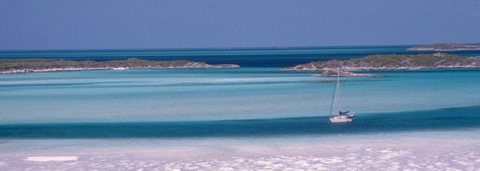
Ahhh Bahamas. Could this be the most beautiful water in the world?? Tough to judge for the whole world, but for many people the Bahamas are the best! And for American and Canadian sailors on the East Coast the Bahamas are the achievable paradise.
But beautiful as they are, the same shallow seas (Bahamas means shallow seas in Spanish - baja mar) can be a concern for sailors new to the practice of shallow water piloting. And its not just for shoal draft sailboats! Even with our old non-shoal draft sailboat with 6 feet draft we used these techniques and enjoyed shallow draft cruising grounds.
Sheryl and I have cruised these islands many times over the past 25 years and spent altogether 14 months cruising the shallow seas of the Bahamas.
Navigation has changed here with the advent of pinpoint accurate GPS and plotters but most of the techniques for safely navigating here have not changed. There are few aids to navigation in the Bahamas. Sand bars shift and reef grow.
10 Navigation Tips for Successful Shallow Water Bahamas Piloting
- Time your passage. It is easiest to judge water depth with the sun over your shoulder. High sun works best - 930 or 10 until 3pm or 3:30 will be best. Try not to come straight into the sun especially when it is lower on the horizon. Do not navigate at night! Rising tide means you can get off again if you get stuck.
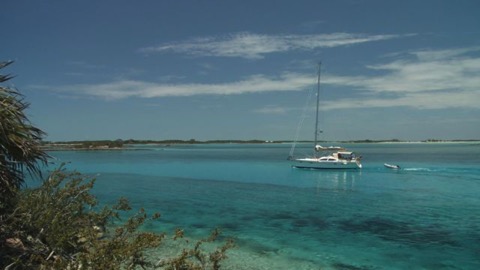
- Do not rely exclusively on waypoints. Cruising Guides have waypoints and they are useful but these are not designed to be used alone. Keep a lookout as well even when running point to point. For new places or routes we haven’t tried, Sheryl and I will check both our charts plus cruising guides for additional information when planning a trip.
- Know your boat’s draft and tolerance to running aground. Can you afford to run aground? If you have exposed rudders or propellors be sure not to run aground. What is the calibrated offset of your depth sounder? Is the offset calibrated to the bottom of keel or to the water surface?
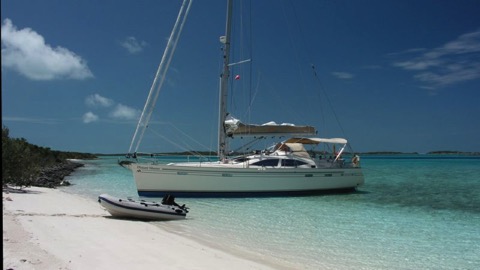
- Wear polarized sunglasses. They cut the glare on the surface of the water so that you can see down into the water much better when wearing polarized glasses.
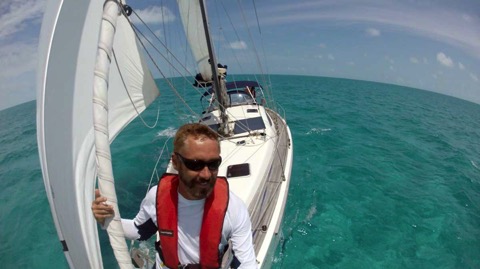
- Keep a good watch. Height helps - have a lookout standing on the cabin top or other high point. Do not look through windows or cockpit enclosures. Keep a sharp lookout. Post a lookout at the bow. Do not rely completely on Electronics.
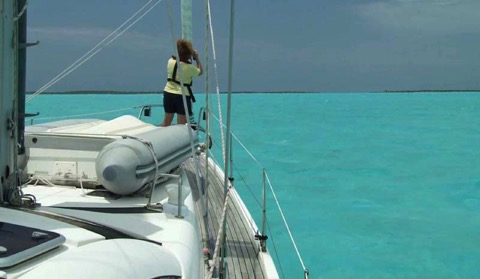
- Slow down or stop when unsure.
- Learn to judge the depth by the water-colour. Deep sapphire blue to swimming pool blue to pale yellow is all sand. Deep green or gray-black will be deeper water of 3-5 meters over grass or reef. Brown water will be quite shallow water over reef or rock - less than 1 meters. Judge depth over sand from sandy colour (less than 0.5 meter - 2 feet) very pale light blue (1 meter) to deep blue. (I will go into this in more depth in my next Tech Blog, “How to Read the Colour of the Water” since it is an important skill for skippers to develop to ensure a safe and happy cruise.) .

- Practice with your depth sounder. Judge the depth ahead (for example, picking a shallower sandy patch) and confirm your estimation as you pass over this patch. Explore ahead in the dinghy and confirm depths with a lead-line.
- Try out a Lead-Line. On our first trip to the Bahamas in 1989 friends gave us a lead-line neatly designed for our boat (which drew 6 feet). It was a 20 foot piece of thin cord and had ribbons tied every 2 feet with a fishing sinker on the end. The ribbons at 2,4 & 6 feet were red indicating depths we couldn't go. 8,10 & 12 were yellow and 14,16 & 18 indicated we could easily anchor here. Great for scouting in the dinghy or for checking depth off the stern...
- Be careful in cloudy conditions. The small trade-wind clouds common to the (otherwise) perfect sailing day in the Bahamas can cast a shadow on the water that look just like a black reef patch. The clue is to carefully watch the bearing - if the bearing changes then it’s a cloud. If you are unsure, head around it. When you get closer it’s easier to see if it’s really a reef. Not all clouds pose a problem. Soft clouds or on a high-cloud dull day it is still relatively easy to judge water colour.
Here is a video on the first time we beached our Southerly 42 in the Bahamas
We love the Bahamas and enjoy the challenge of piloting in the amazing blue waters here. A little preparation and practice will allow you to safely navigate this wonderful cruising ground.
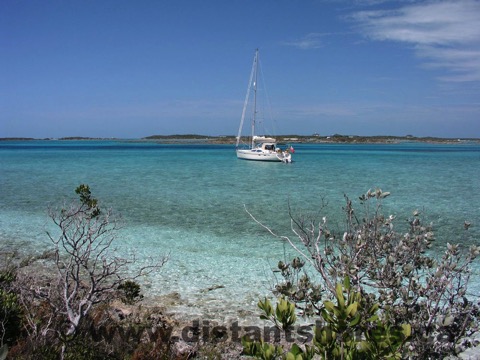

Join our email list and get hints, technical articles and tips plus videos to help you achieve your cruising dreams.
- FREE 1/2 hour video on cruising the Exuma Islands in the Bahamas
- Technical Blog shows you how to deal with issues facing the cruising sailor
- Destination information from some of the world's best cruising areas
- Special discounts and promotions
blog comments powered by Disqus